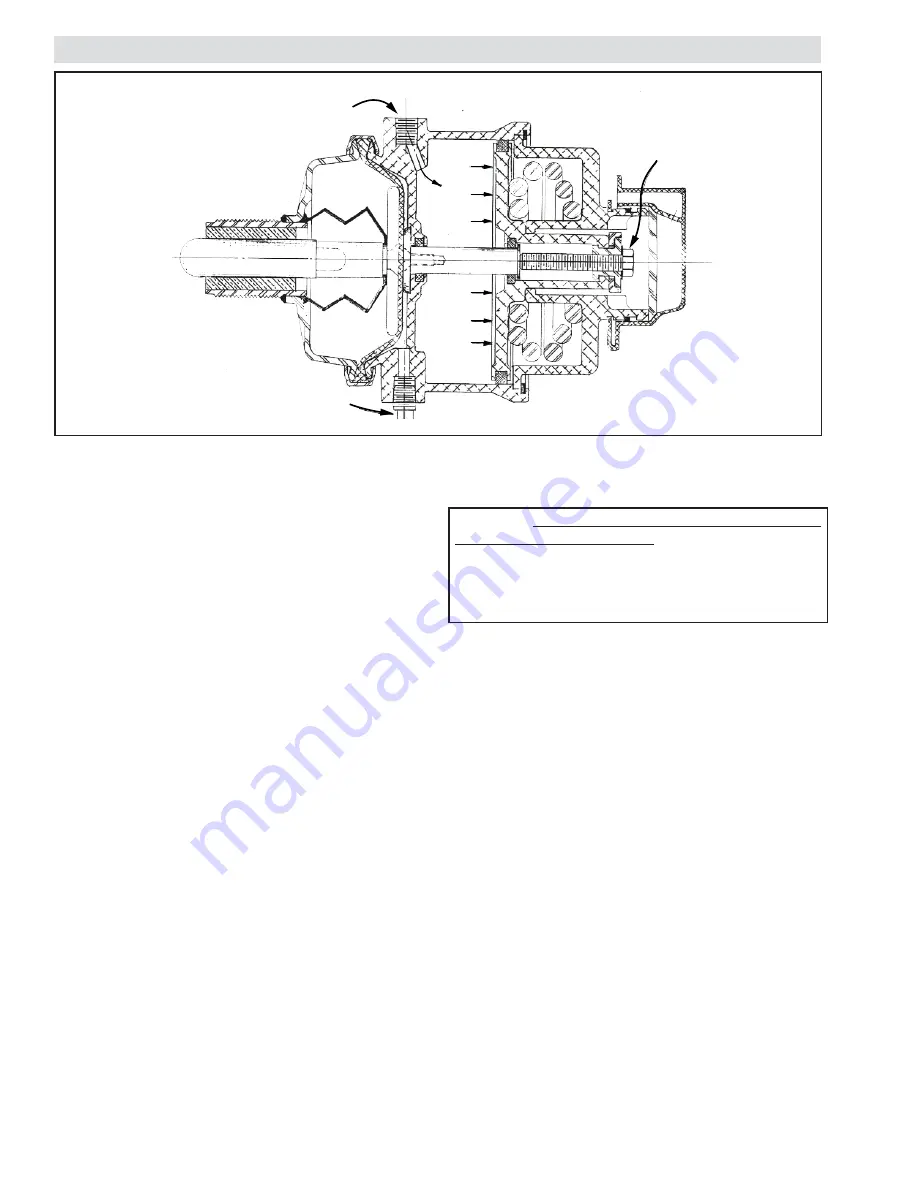
15
FORM NO. L-20063-AG-1216
TAP BOLT,
TIGHTENED
SPRING BRAKE PORT
PUSH ROD
SERVICE PORT
(SHOWN CLOCKED 180°)
Refer to Figure 16.
BD B
rake
S
pring
2-p
ort
a
ctuator
F
unction
The actuator is shown with the spring actuator in the air
released position.
The BD Spring Actuator is used for either cycling in
the air engaged mode or for power-off, E-stops in the
spring engaged mode. Refer to page 13, Figure 14 for a
schematic showing how the controls are set up.
Two 3-way normally closed valves are used to direct air to
either the SERVICE PORT or the SPRING BRAKE port.
Activating the valve on the air supply line to the SPRING
BRAKE port releases the “normally-on” spring engaged
mode.
a
ir
e
ngageD
M
oDe
The brake is cycled by directing air to the SERVICE
PORT. Cycling is accomplished using the air actuated,
diaphragm sealed chamber.
S
pring
e
ngageD
M
oDe
In a power-off situation, with both control valves de-
energized, the air in SPRING BRAKE chamber exhausts
and the spring pushes the PUSH ROD to engage the
brake.
Using either the spring or the air activated diaphragm with
a 24-inch disc produces full brake torque of 19,000 in-lbs.
Reducing the torque in either engagement mode is
accomplished by reducing air pressure. Spring engaged
torque is reduced by lowering the release air pressure by
the same percentage as the torque reduction.
D
ual
e
ngageMent
M
oDe
CAUTION: DO NOT USE THE ACTUATOR IN THE
DUAL ENGAGEMENT MODE.
RELEASING THE SPRING HOLD-OFF PRESSURE
AND APPLYING AIR TO THE DIAPHRAGM ACTUATOR
SIMULTANEOUSLY PRODUCES TOO MUCH TORQUE
AND IS NOT RECOMMENDED!
r
eDucing
B
rake
t
orque
; a
ir
e
ngageD
M
oDe
Torque is a linear function of air pressure. Simply set the
regulator to for the desired torque.
Example: The air engaged BD Caliper Brake produces
19,000 in-lbs torque with a 24-inch disc at 80 psi. At 40
psi the torque is half or 9500 in-lbs.
TWO-PORT ACTUATOR FUNCTION
Figure 16





















